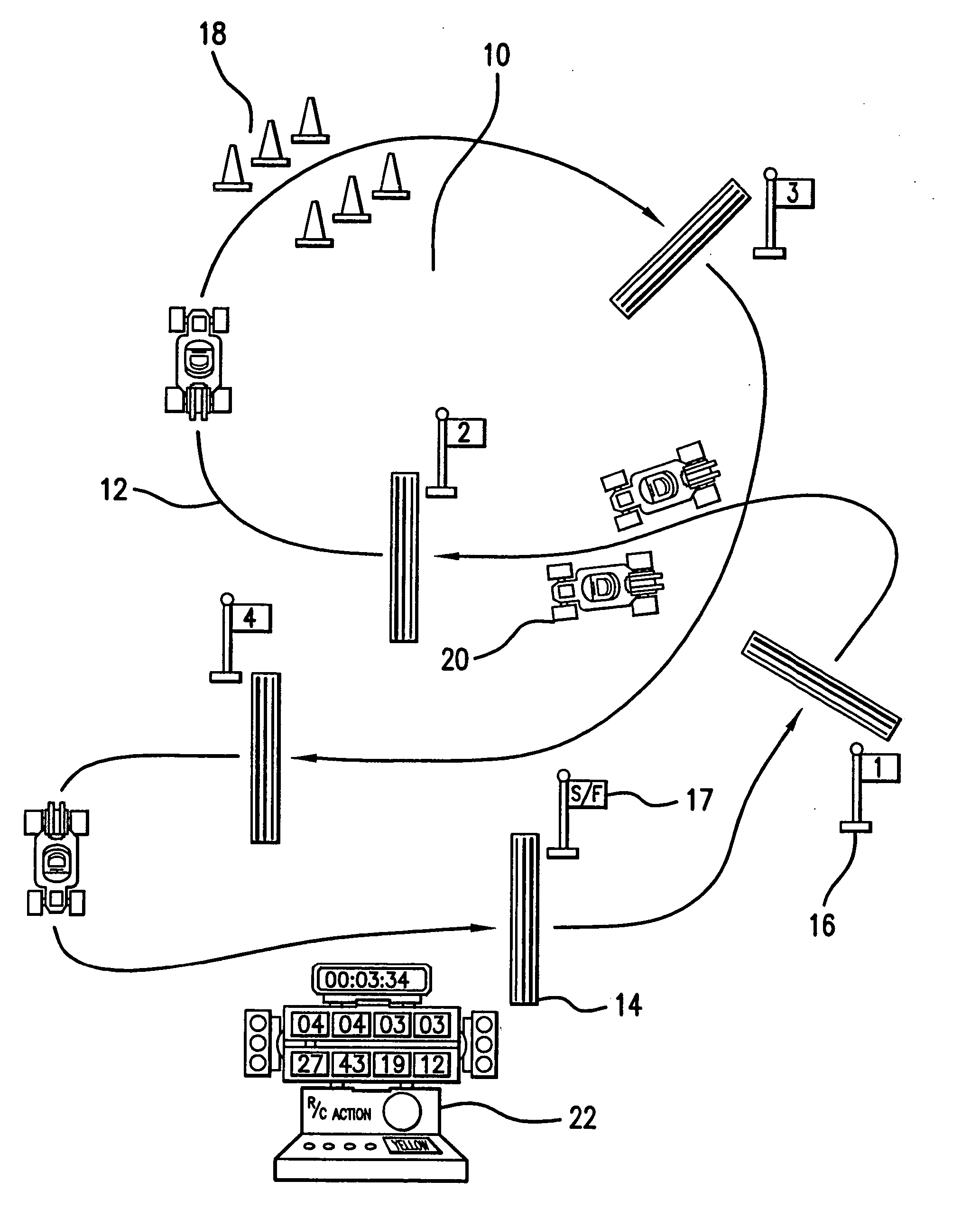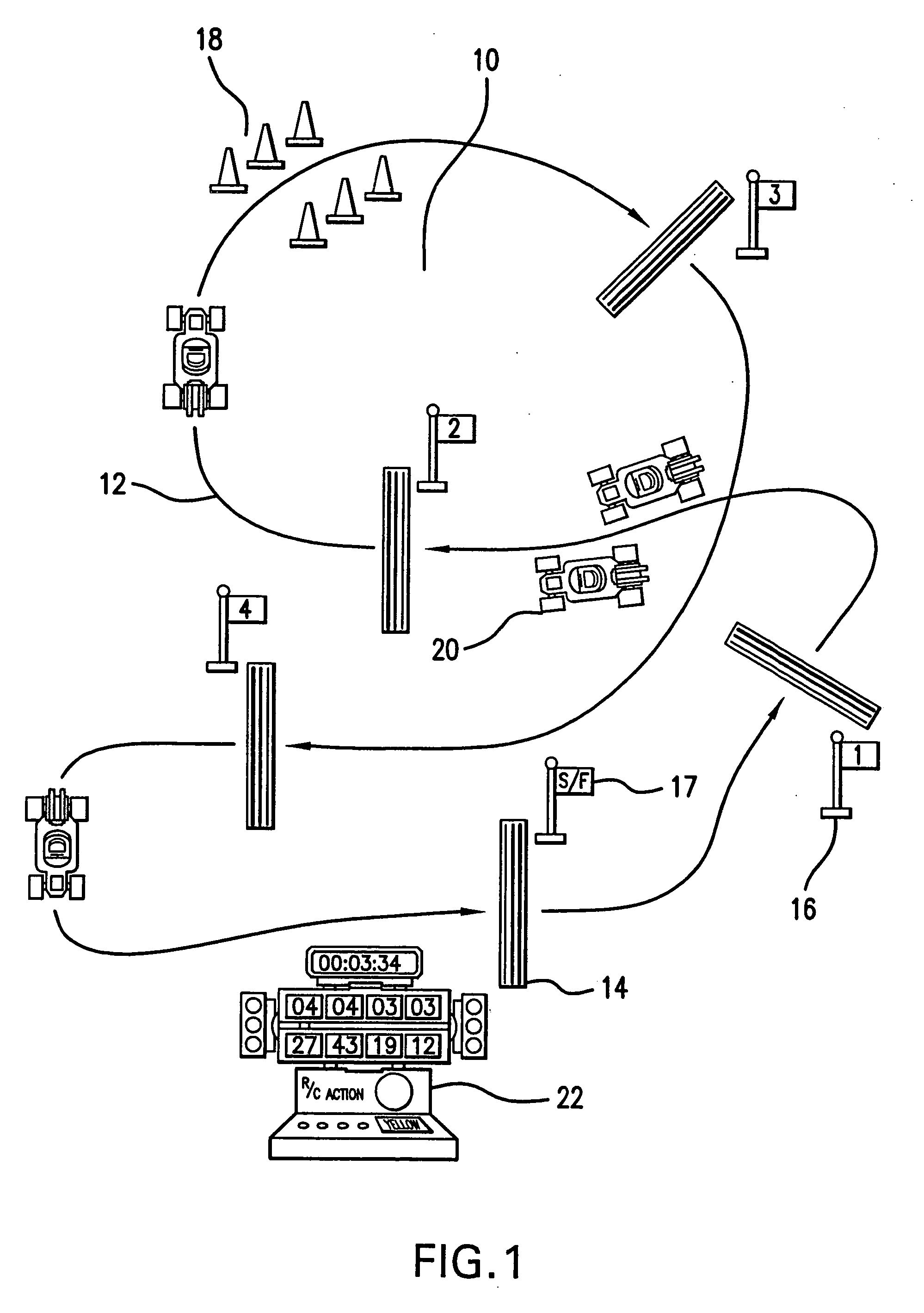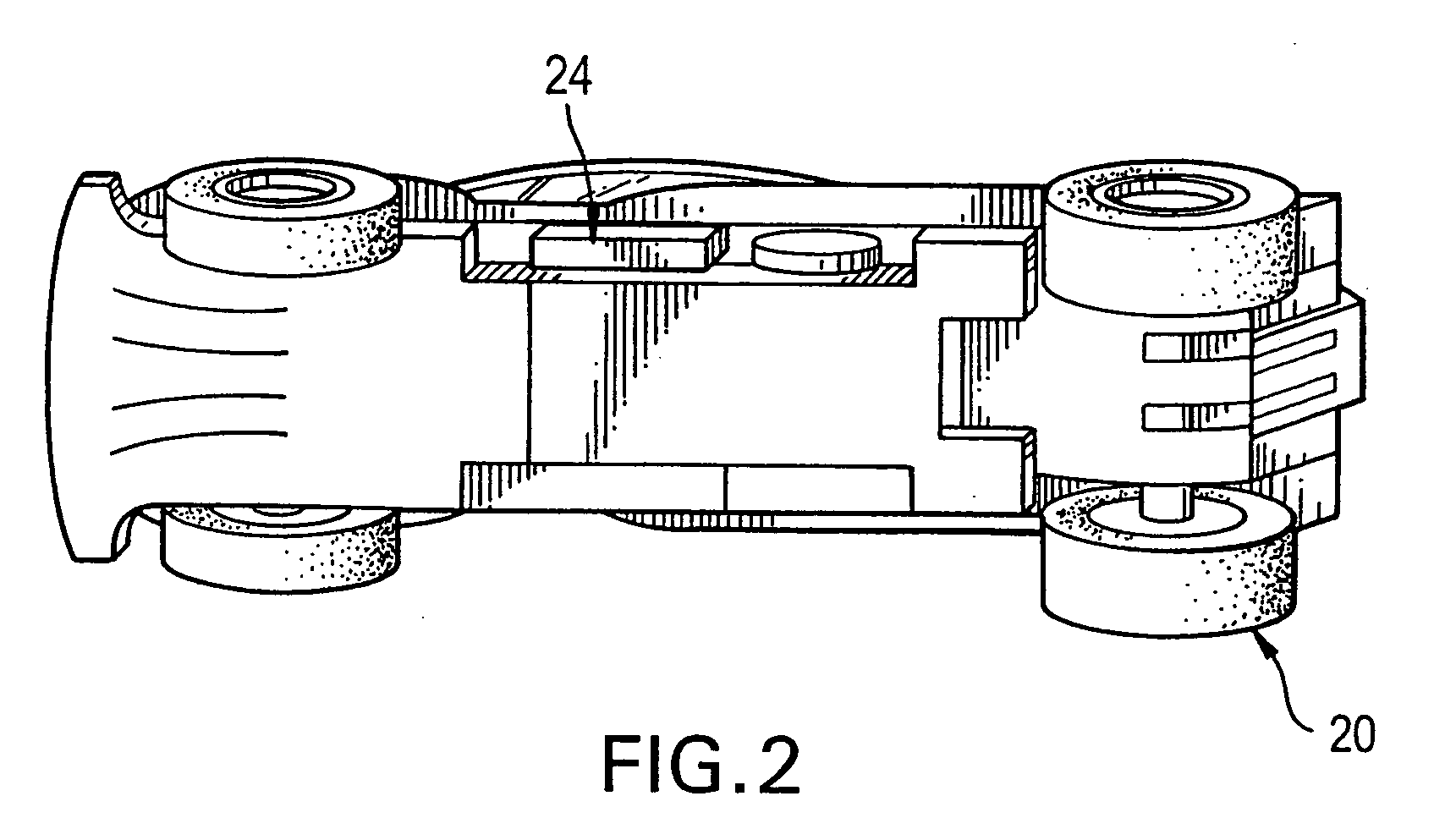Racecourse lap counter and racecourse for radio controlled vehicles
a technology of radio controlled vehicles and lap counters, which is applied in the field of system for compiling and displaying racecourse data, can solve the problems of difficult to achieve the effect of easy change, low cost, and easy for competitors to “cut” corners and cheat the course,
- Summary
- Abstract
- Description
- Claims
- Application Information
AI Technical Summary
Benefits of technology
Problems solved by technology
Method used
Image
Examples
Embodiment Construction
[0032] In accordance with the invention, there is a combination of a racecourse and a plurality of racing vehicles. With reference to FIG. 1, the racecourse 10 has a predefined path 12 that is defined by at least one marker or gate 14. Unlike prior art racecourses requiring permanent fixturing to define the path, the present path is defined by gates 14, that are preferably easily moved as described below. The order the vehicles must negotiate the course is given by a number marker 16. The predefined path 12 is thus defined by this order. One lap of the course is completed when all the gates have been crossed by a vehicle in the proper order, preferably terminating at a start / finish gate 17.
[0033] While the traditional wood or plastic walls to define the course are no longer needed, to add visual interest to the race, borders 18 of the race circuit may be formed by any convenient method. One simple method is lines of chalk drawn in the form of a track on asphalt or another hard surf...
PUM
 Login to View More
Login to View More Abstract
Description
Claims
Application Information
 Login to View More
Login to View More - R&D
- Intellectual Property
- Life Sciences
- Materials
- Tech Scout
- Unparalleled Data Quality
- Higher Quality Content
- 60% Fewer Hallucinations
Browse by: Latest US Patents, China's latest patents, Technical Efficacy Thesaurus, Application Domain, Technology Topic, Popular Technical Reports.
© 2025 PatSnap. All rights reserved.Legal|Privacy policy|Modern Slavery Act Transparency Statement|Sitemap|About US| Contact US: help@patsnap.com



